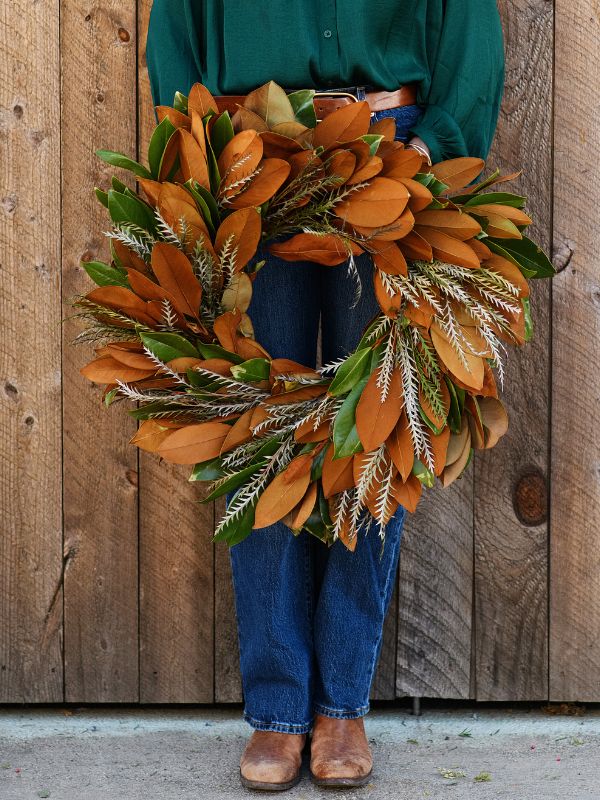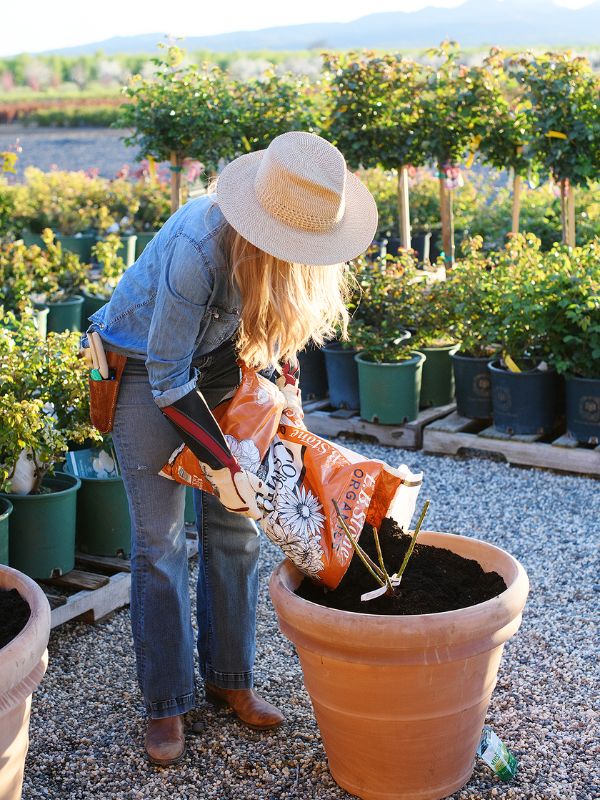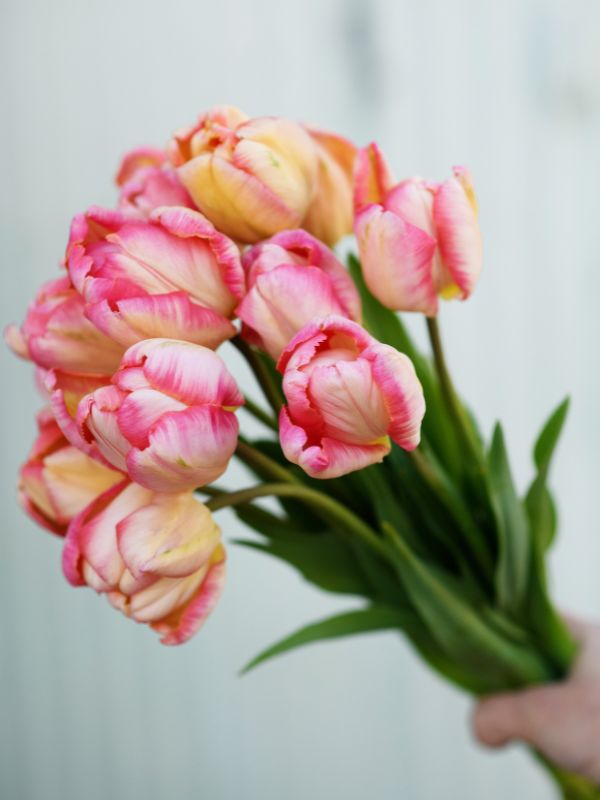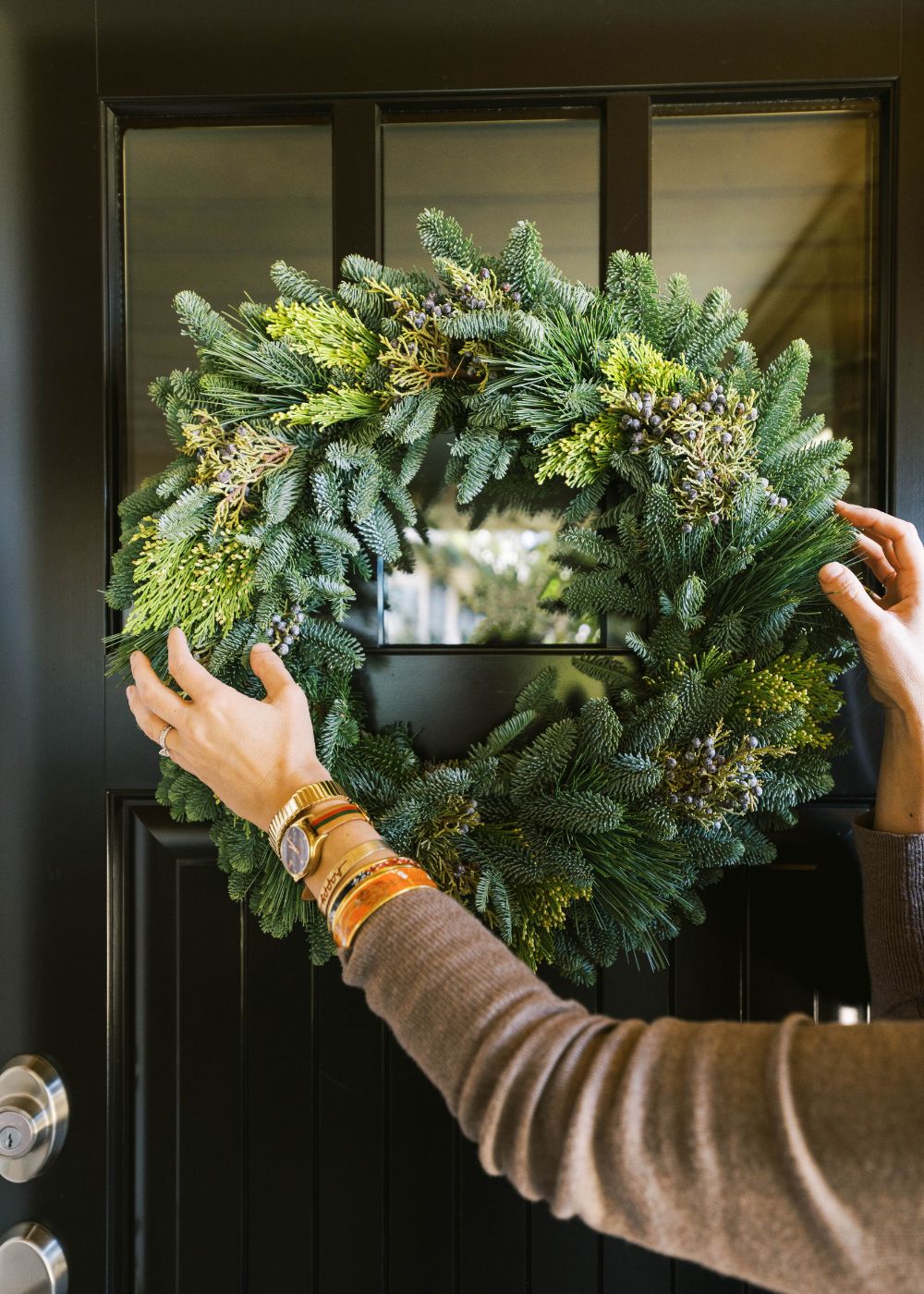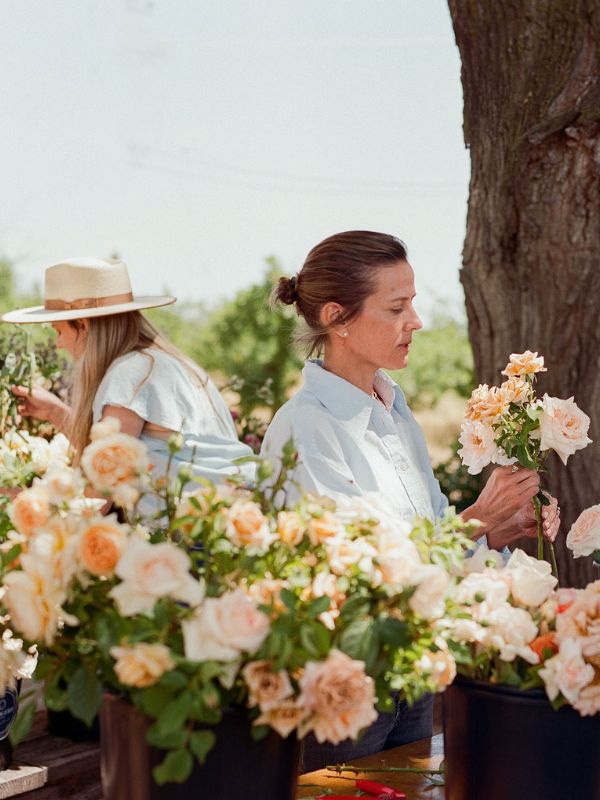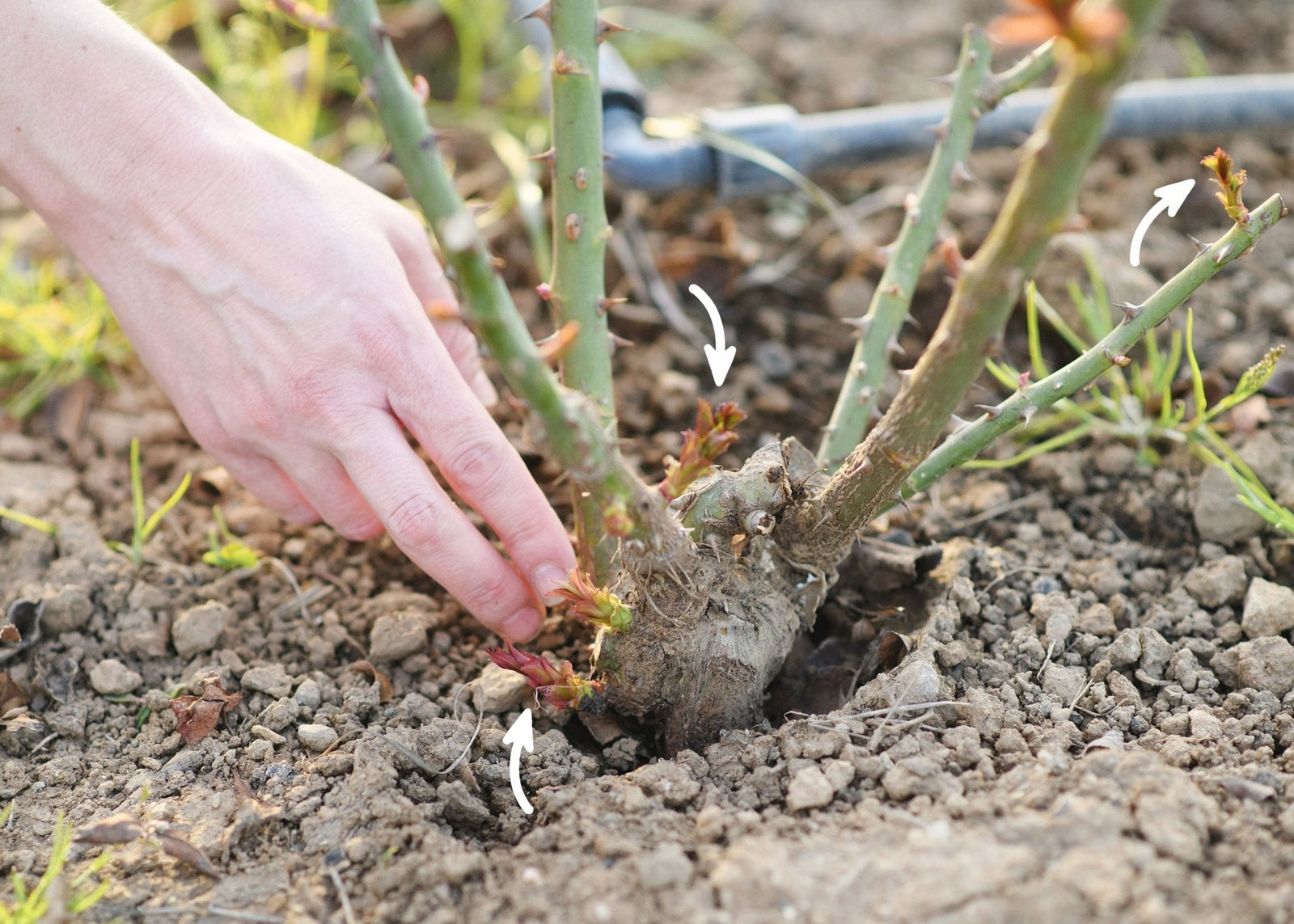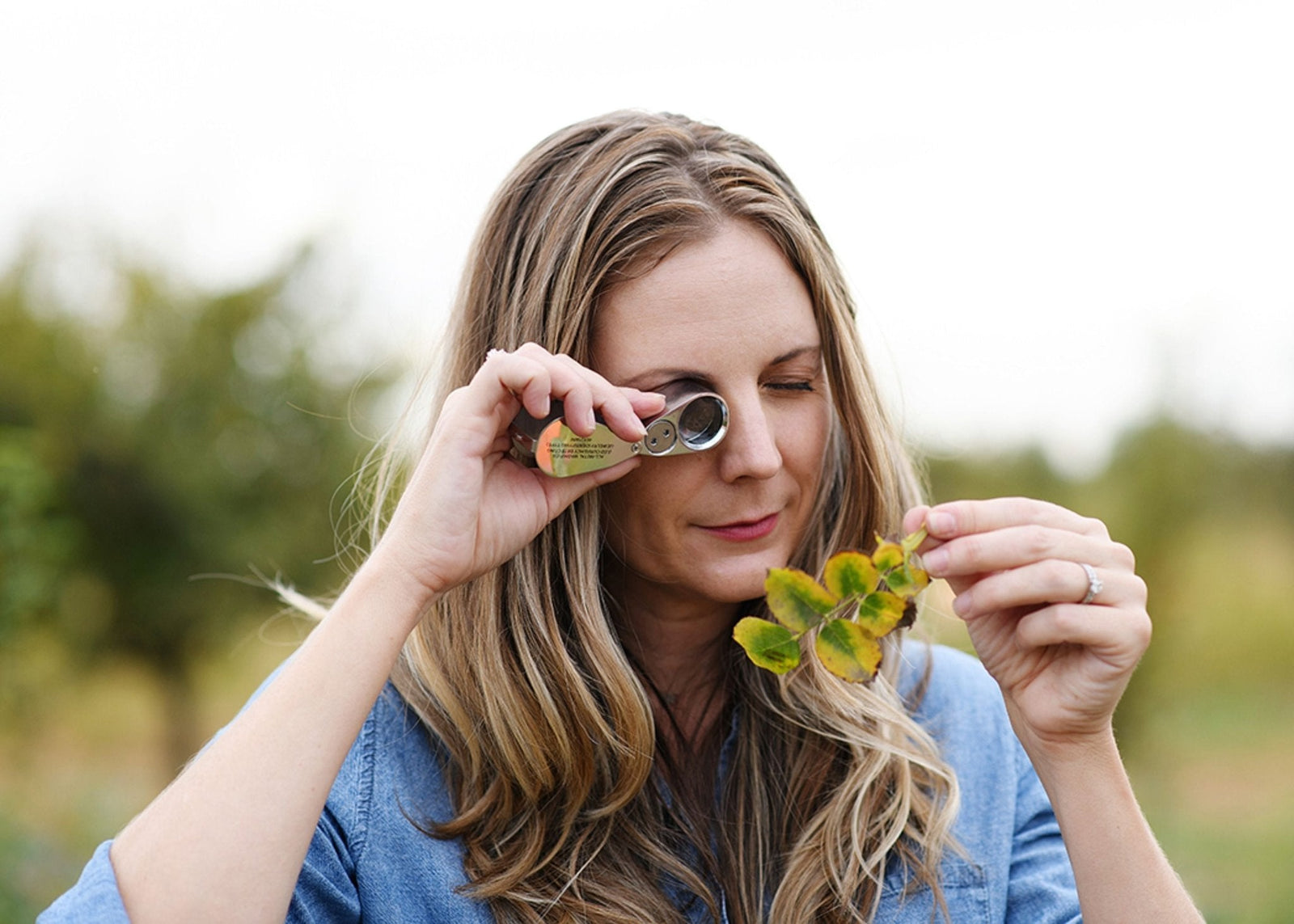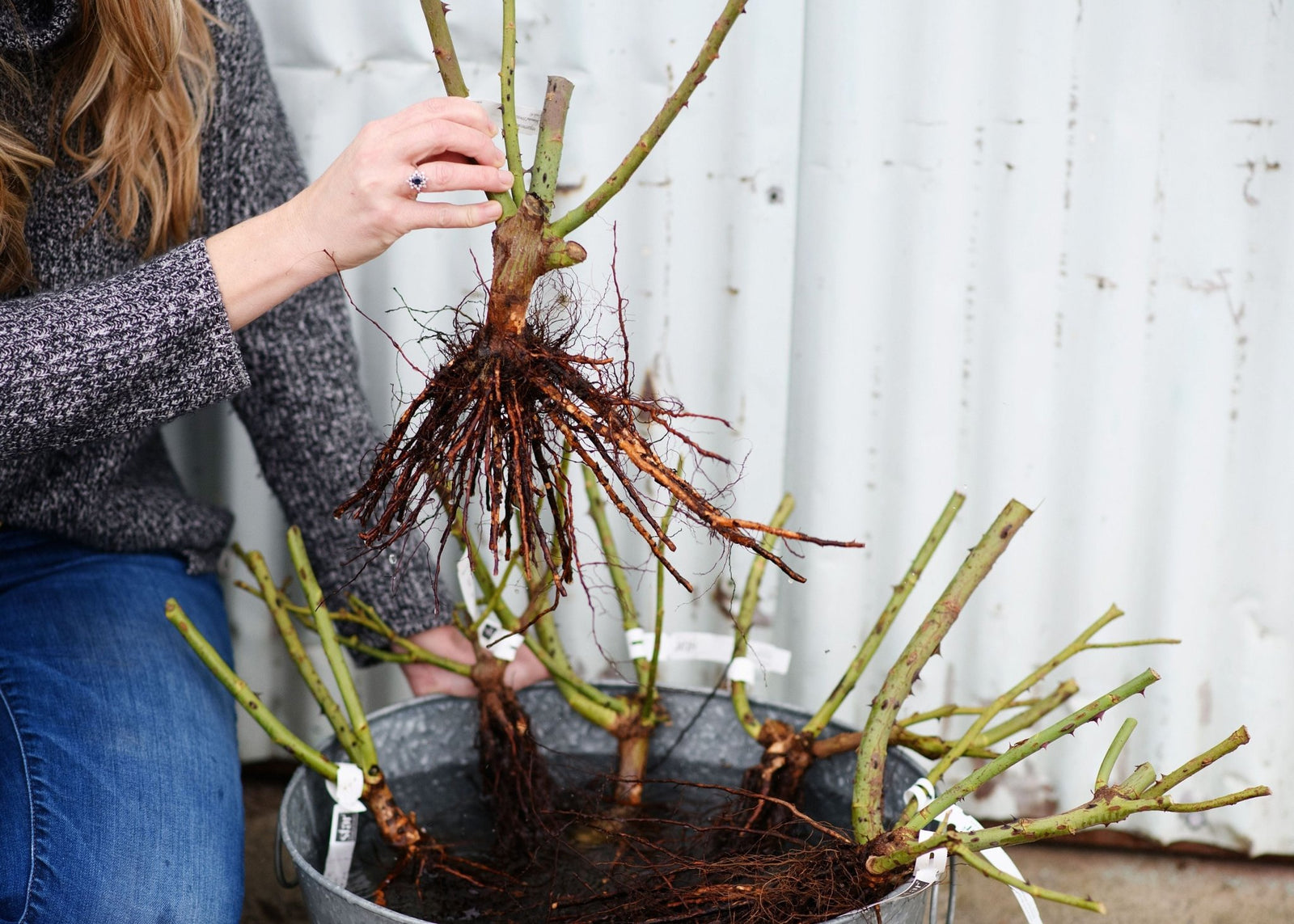Happy February! A new month means a new newsletter focus, and I'm so excited to share this month's theme with you—dormant pruning! We just wrapped up our dormant pruning here at the farm and are working on bed clean-up and applying our dormant sprays next.
Over the years, I've noticed that dormant pruning is often where rose growers feel the least confident in their gardening skills. Uncertainty about what to cut, where to cut, or even when to cut often leaves people hesitant and unsure. Does this sound familiar? While pruning might seem daunting at first, trust me, with a little guidance, you'll be ready to tackle it like a pro and it will become one of the activities you look forward to in your garden every year.
Over the next few weeks, I'll cover everything you need to know: why and when to prune, the essential tools for dormant pruning, the 5 Ds of pruning, step-by-step simple pruning techniques and post pruning dormant spraying. By the end of February, you'll feel confident with your shears, and your roses will be healthier, happier, and ready to thrive!
(Want to jump ahead in the process? - You can download my FREE 5 Step Dormant Pruning Guide!)
We'll explore pruning techniques ideal for hybrid teas, floribundas, grandifloras, and English roses—the most popular rose varieties cultivated by home gardeners and flower farmers for cut flowers. Since these types of roses are so popular, this simple method should work well for most roses you're likely to have in your garden. However, old garden roses, once-blooming varieties, Knock Out roses, shrubs, and climbing roses are much more diverse and require different pruning techniques, so we'll save those pruning lessons for another time. This week, we're starting off the dormant pruning series with the basics—why and when to prune.
Why Dormant Prune?
Pruning is like giving your roses a rejuvenating spa treatment. By trimming away the old and dead parts, you revitalize your plants, creating room for fresh, vibrant growth in the spring. Dormant pruning is essential to perform once a year for maintaining healthy, productive roses by removing weak, dead, or diseased wood, allowing the plant to direct energy toward vigorous new growth.
Since roses bloom on new wood, pruning encourages fresh shoots, leading to more abundant and healthier flowers. It also improves air circulation, reducing the risk of fungal diseases like powdery mildew and black spot while preventing pests from overwintering. It helps maintain the plant's shape, preventing it from becoming overgrown or leggy. Additionally, cutting back older, less productive canes rejuvenates the plant, ensuring long-term vitality and continuous blooming.
Pruning also allows you to tailor your roses for specific goals. Are you aiming for a stunning landscape display or growing immaculate blooms for a cut flower garden? Knowing your purpose helps guide your approach too. Consider what you're growing for—beauty in the garden landscape, cut flower production, or a vibrant hand picked bouquet—then prune accordingly to achieve the best results.
When to Prune
The best time for dormant rose pruning varies depending on your
USDA Plant Hardiness Zone, as your region's climate and seasonal conditions determine when roses enter dormancy and resume growth.
This should serve as a general guide, as yearly weather patterns—such as rain, cold snaps, or heat waves—may require you to prune earlier or later than the standard recommended timing for your zone.
For instance, last season at the farm, we experienced a prolonged, cold, and wet winter, with heavy cloud cover and minimal sunlight. As a result, we delayed pruning until late February, nearly five weeks later than usual. In contrast, this season has been entirely different. A warm, dry January with plenty of sunshine and no rain for four weeks allowed us to complete our dormant pruning much earlier than normal, and we're already seeing rose buds beginning to emerge. Ultimately, trust your gardener's intuition and stay attuned to weather patterns each year. Observing the seasonal changes will help you determine the perfect time to prune for optimal results.
Ideal dormant pruning timing based on your growing zone:
Zone 3: Mid-April to Early May
Zones 4-5: Early to Mid-April
Zone 6: Mid to Late March
Zone 7: Early to Mid-March
Zone 8: Mid to Late February
Zones 9-11: Late December to Mid-February
For the best results, prune before the buds start to swell and open. While pruning later is possible, it's easier and more effective to tackle this task before new growth begins.
This week's action step is to decide when you'll be dormant pruning and mark it on your calendar now. Setting a plan ensures you'll be ready to give your roses the care they need. Next week, I'll share my favorite tools for making pruning easy, efficient, and even enjoyable. Stay tuned—your pruning toolkit is about to get an upgrade!






